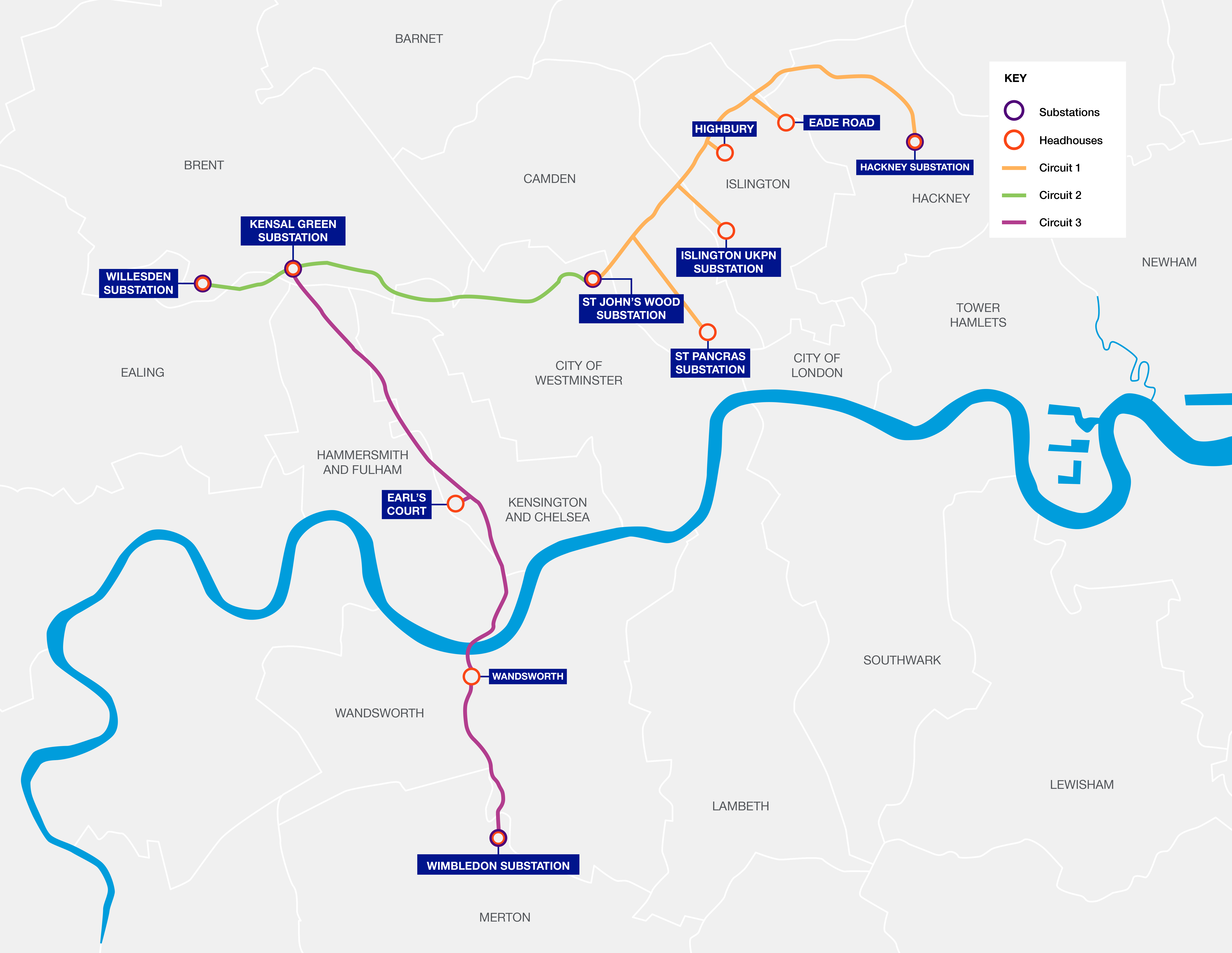LPT1
To meet London’s growing demand for electricity while enabling access to cleaner, renewable energy sources in the future, National Grid embarked upon a seven year, £1 billion project to rewire the capital in February 2011.
The team constructed 32 km of tunnels housing high voltage (400 kV) electricity cables stretching across London, from Willesden in the west to Hackney in the east, and from Kensal Green in the north to Wimbledon in the south.
Once tunnelling was completed in March 2015, the team began installing high-voltage cables through the tunnels. These cables were connected to National Grid’s substations at either end of the route, with access for future maintenance allowed via the shafts located at 14 Headhouses along the route. Headhouses were designed to have the minimum possible visual impact on the local area and serve as essential access points to ensure the safe maintenance of the tunnels for the future.
Before the London Power Tunnels (LPT) project, London's electricity cables were buried beneath roads, causing frequent and disruptive roadworks. The LPT project addressed this by relocating major cables into tunnels 20-60 metres below ground. This approach had multiple benefits:
- Avoids surface-level disruption during construction and maintenance
- Minimises impact on traffic, residents, and businesses
- Provides flexibility for future upgrades and capacity increases
- Enhances safety and environmental integration with low-visual impact headhouses

- 32 km of deep underground tunnels
- 200+ km of high voltage cable installed weighing up to 40 tonnes
- 14 ventilation and access headhouses across London.
LPT1 was completed in 2017 on time and within budget, standing as a significant milestone for a future-proofed energy network in the nation’s capital.
The project's transmission circuits now carry some 20% of London's electricity demand, and stretched out, they would run all the way around the M25.